The Real Market with Chris Rising – Ep. 90 Todd Doney
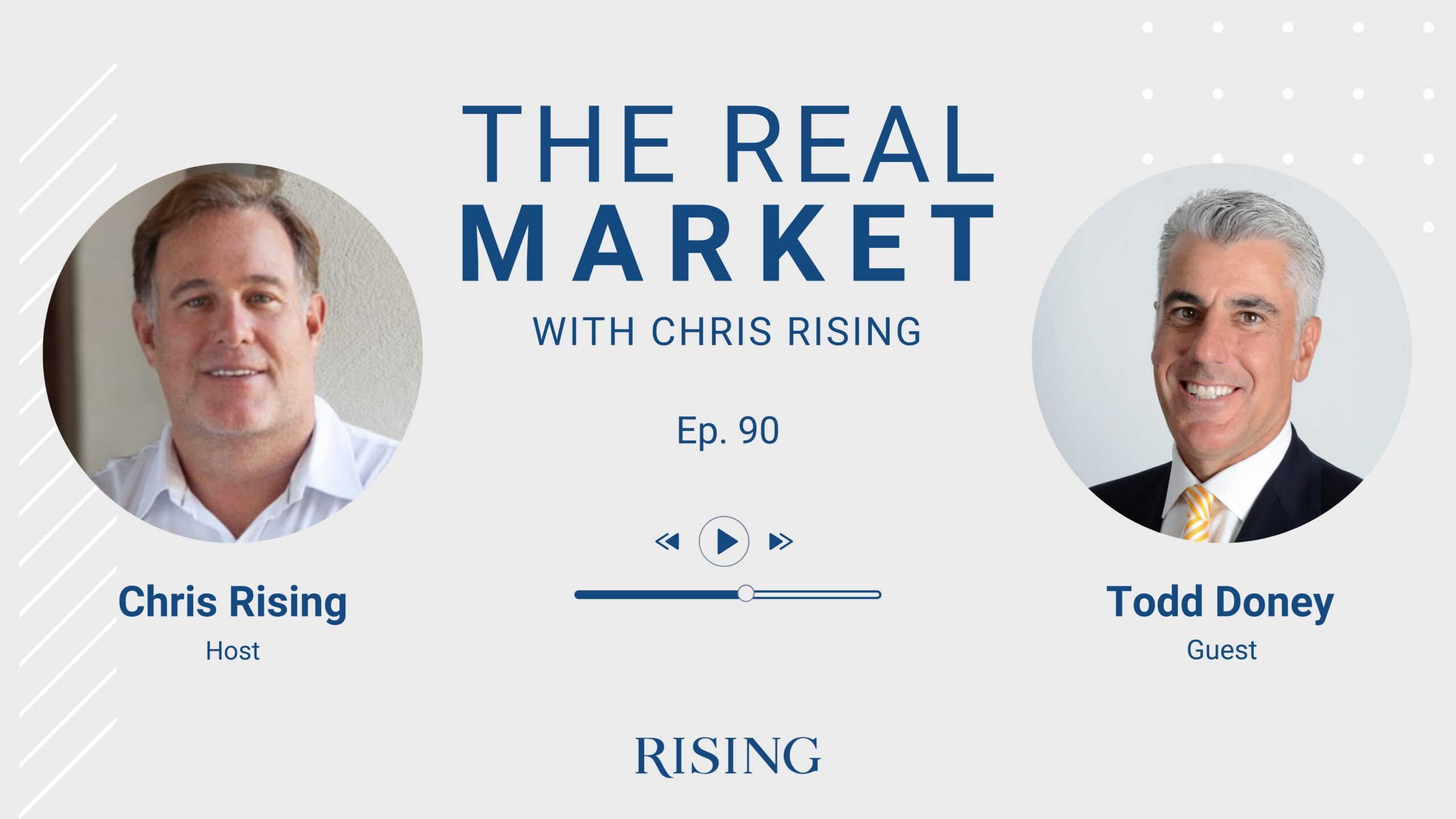
00:01
Welcome to The Real Market with Chris Rising, the only podcast that brings the real estate conference panel to your headphones. You’ll hear from superstars from every realm of commercial real estate, the biggest brokers, the most well-known architects, the largest investors, and the most visionary developers. We’ll learn what they do, how they do it, and what drives their success. We’ll discuss the latest trends across regional markets, capital flows, both national and global. And we’ll explore technology’s role in shaping all of them.
00:32
take a clear-eyed look at where we’ve been, where we are now, and what’s to come. Real conversations. Real experts. Real insights. This is the real market.
00:50
Welcome to the real market with Chris Rising. I’m really pleased to have my dear friend and a prior guest on the show. Todd Doni, who’s the vice chairman of CBRE. I would say, I don’t think there’s anybody better in the United States to talk about what’s happening for landlords or tenants. Todd sees both sides of the coin and is actively involved in deals. So Todd, I’m so grateful you come back here in 2024 and talk to us a little bit about what we’re seeing.
01:19
Happy to do it Chris, thanks for the invite. Well you know I just was going through the way we get some news these days. I get the Morning Brew from whoever’s putting that together and it’s in my email and I saw that they said Morning Brew pulled out a statistic that 2023 was probably the worst year for absorption of new leasing.
01:45
In the history of when they’ve been keeping statistics, probably worse than the early 90s, 93, 92, 93, probably worse than 81. As an owner of Class A office space, of office buildings, it sure felt that way, but it was stark to see it. What would you say about last year and 2023? And do you think that they’re, that statistic is probably accurate, but it was probably the worst year in the history of office leasing?
02:12
It probably is accurate. I mean, there’s a lot to unpack in that question you just asked, right? There’s a lot going on, right? We all focus on that pandemic and hybrid working from home, right? That’s the conversation most of us have. And as a company, we just finished a fourth-quarter survey with a number of our clients globally. I think it represents about 350 million square feet of space.
02:41
Our clients indicated, I think it was over 60% during COVID have reduced their footprint and 63% of that group plans on further reductions in their footprint. And I think it’s something like 43% of that group plans on a reduction of as much as 30% of their footprint. So to anticipate that leasing was slow, you also had a…
03:09
you know, an environment where I think there were a lot of people anticipating a recession at the beginning of 23. So I think the 23 statistics are a little bit of a combination of people’s perception of the economy, companies trying to get their arms around what hybrid work means these days. What is office utilization? What is office occupancy? And so hopefully, you know, as we’re coming out, people are getting a clearer picture and
03:37
I think activity will be a little bit more robust in 24. And again, it just depends, if we can talk about this for the next several minutes, I think it just depends, you know, what kind of company, what market you’re in, what city, what state you’re in, and even what sub market you’re in, right? Cause we’re seeing some sub markets here that are acting like pre pandemic, if not higher rental rates and absorption numbers. Well, I think there were some easy answers to this
04:07
The way we work has changed so dramatically. I love the folk’s fun at the movie Dolly Parton movie nine to five where You know you had a whole floor that was all typists or when I when I first started as a young lawyer We had a whole floor that was the law library So clearly those have gone away clearly the big file cabinets where your office space was part storage space But those things have gone away but what I find so dramatic is I mean outside of
04:35
I mean, really one or two things, I can run my whole business on my iPhone or my iPad. So the way I work and what I considered part of my workday, which was organizing papers and reading lots of documents and highlighting and keeping notes, that has dramatically changed. And I know it has for most people, but what hasn’t changed are the face-to-face meetings. And at least in our business, we get together several times a week to strategize, whether it’s operations or acquisitions.
05:05
leasing. But do you think real estate is the exception? What are you seeing from your clients about how they’re using their space that would mean that they’re going to reduce their space by 30%? So I think what our survey showed is the employees are coming to the office for basically three things now. Collaboration with their teams.
05:32
or they’re meeting with their bosses or their mentors, or there’s a work event. So if it’s not one of those three and they’ve got a day of just focused work, a lot of those employees will just choose to work from home or work from somewhere outside the office. You know, when you, a hybrid policy doesn’t mean everybody’s at home, you could be going at the Starbucks down the street or somewhere sort of other than your office. And so I think that sort of…
05:59
decreases the amount of space that corporate America needs. And what we’re seeing now with the new hybrid footprints, the people that have designed space for COVID and the weather been more successful have had more activity-based space within their spaces than head down space as they do their space plan and build out their new space, which makes a lot of sense. And my team comes in here every day. I think we’re much more efficient. I think we give our clients much better service
06:29
being here. It’s interesting today, you know, is a Tuesday and here at Foreign South Hope, we’ve got five levels of subterranean parking. There’s only two spots available on the fifth level today. And I think that has a little bit to do with Capitol Group and all Malvany and Myers, as I understand big tenants in our building have now mandated Tuesday, Wednesday, Thursday as mandatory days in the office. So, you know, I think we’re getting back to
06:55
a higher population in these buildings. But again, in downtown LA, it’s a different environment than Century City or some other suburban markets around the country. Let’s get into, I wanna get into the markets in a second. Let’s really dive into what you’re seeing on the different size companies. The impression that our team has is that if you’re a big bank, if you’re a big hedge fund, if you’re any kind of finance company, you’re kinda in the office every day of the week.
07:25
If you’re a law firm, it’s probably that hybrid you just described. It’s three days a week. But once you get outside of large employers, it seems much more uniform that it’s hybrid, that people are drawing from a larger employment pool because they’re saying only come in one or two, three days a week. Do you find truth in what I just said or would you poke holes at what I just said? It’s interesting. Our statistics,
07:52
are showing that like 90% of companies have some sort of policy, right? Only probably 45 or 50% of those are mandating three days or more a week in the office. Our actually our studies show that the mid-sized companies are actually having more success at the articulating their policy and then executing on it. Only 4% of these respondents indicated that
08:21
their policies have some consequences to them, right? So these companies have policies, but only 4% have a meaningful consequence if you don’t meet it, right? So they put it out there and it’s kind of a soft guardrail sort of thing. And I mean, I see them both. I see the big companies having success, getting people back and feeling like they’re more productive. And I see the mid and small companies having the same thoughts. So I think it’s dependent on
08:50
the leader of the company and what the employees see from that person. I think it’s probably also relative to the industry and how much you can get done not being around your fellow employees. What about some cultural changes? I mean, I know when you and I started in the business, your work day was, get it, especially as a broker, get a breakfast, try to get a coffee, have a lunch, maybe an afternoon coffee and have an early drinks or dinner with somebody.
09:18
kind of Monday through Thursday. That was how you got business. It doesn’t seem to me like that’s a very effective way to get business today, because a lot of people, I mean breakfast seems like it’s kind of gone out the window, and lunch is pretty effective, but drinks and dinner is kind of hit or miss. So what are you seeing in terms of the cultural behavior of some of your clients Monday through Thursday? Yeah.
09:42
So funny, funny to say that, because you and I chatted a few weeks ago, and you sort of mentioned about this. And in this survey that we just did, that sort of question came up, and overwhelmingly the employees indicated that they’re fine coming to work during a work day for a company event or something, but they have no interest in a company event or other parts of the business that aren’t in the typical work day. So that…
10:12
You know, those late night dinners or everybody going and grabbing a drink at the local watering hole is definitely less and less. And when you looked at asking the employees, like, what amenities do you want in the space? So number one was food, right? Number one was food availability. Second, interesting, free parking was the second amenity that these employees wanted.
10:38
And then the third was the coffee sort of situation. So good coffee availability. But those are the three amenities. But I agree with you, Chris. I mean, the group of people going out after work certainly has diminished over the last few years. And I look at how as a young lawyer, I watched partners go get business. And it was a lot of being entertained and whined and died.
11:04
And that just seems like it’s gone away. It seems like it’s moved more towards the conferences. Like that’s when people are willing to schmooze and all of that. Do you see anything from law firms that you represent or you hear about? I mean, what do they say to the young people? How are we gonna get new business? How is that happening? Yeah, yeah, yeah. I mean, I do, and in fact, this came up today earlier, also when you mentioned like lunches and breakfasts in an environment like downtown LA,
11:34
The fact is during the pandemic, we lost a ton of the restaurants that we have downtown. And just like you and I experienced in our hometown of Pasadena, you know, if you look at the Smith Brothers restaurants, right, those were three great restaurants that were always open for lunch. None of those restaurants are open for lunch anymore. So just the availability of a good lunch spot sometimes in the market that you’re in has been reduced. And I think it’s, again, it’s a combination of things. I think it’s a…
12:02
a cultural thing a little bit about after work activities. I think people are much more cognizant of if they’re going to enjoy an alcoholic beverage and an after work event. I mean, I think we were probably a lot of us, you know, there’s some irresponsible periods that we had early in our careers when we went out and probably shouldn’t have been driving. And so I think people are just smarter and better about that stuff. And then if you want to introduce, so you’re going to say, hey,
12:31
you know, I’m gonna have any drink at all, I’m gonna have an Uber or a lift, I’m not gonna get behind the wheel. So you’re adding another expense component to that going out, which I think as a young person, you know, you’re trying to watch your nickels. So I think it’s all that combined perhaps. Yeah. One of the things I also find interesting is, and I hear this from my people and I feel it too, is I am so efficient on what I can do on an iPhone today than what you could do even five years ago or three years ago.
13:00
It’s kind of ridiculous to say to somebody, you got to be in the office at seven in the morning to get all your focus work done when you can get that done more efficiently in other places. So that kind of blows up the start of the workday and the end of the workday. And it does really, it really blows up the creative collisions outside of kind of 10 to 2 or 10 to 3. Is that just when you’re talking to somebody about, hey, your new office space and
13:29
Are you really just designing for 10 to 3? Is that kind of where it’s coming in? I don’t know if it’s really a matter of the hours, as much as designing it for when they are in the space. Is it getting utilized for what their intent is coming in? And is it, you know, it’s almost one of these things too, and I think we were chatting about this, is you’re almost designing space in the future.
13:58
as if you want it to be crowded the whole time. So you are putting less chairs out there than you may need because you want it to have some vibe going in, right? And like, I think people want to go into an environment where there’s a lot of other people, where they sense some activity. So you’re almost under, you know, designing the space. You can’t even meet the capacity on a busy day if you had it. For example, our London office where my daughter works now,
14:28
I think there’s 2400 employees in that office and I think there’s roughly 2000 seats and they’re all going in every day to the point that they’re telling certain groups you’re coming in too much. And I think when you go to that environment, it spurs wanting to be there because it’s almost like FOMO, right? Like I’m missing out if I’m not there. Whereas today, like in downtown LA, there’s no FOMO when you come to the office because right there’s nobody else there. So you’re like, okay, I’m pretty sure I’m not missing out on anything.
14:58
That’s a good point. One of the things that also has been made apparent to me, to do the job of a real estate investment and operating company, you are in the software all day long. You’re either in Yardee for property operations, you’re in VTS for our leasing, we’re in DealPath for underwriting and acquisitions. Asana is our major project management, and then we use Google Workplace, and you’ve got GChat, and you’ve got Docs and all of that.
15:27
So every one of our employees, whether they like it or not, can be tracked because that’s the only way you can get your job done today. What it’s from my perspective as the employer, I like it because you know what? I can really see if people are working hard or not. I mean, it’s not big brother. It’s just you see what’s happening in the software. I have to imagine that’s the case for most of your clients is they really do know what their employees are doing because work has become so software based.
15:56
Has that affected the way they look at the office space? Like, well, you know, we’re just not, we don’t need the big boardrooms anymore because unless it’s for seating people, I’d rather have an auditorium. I mean, has it kind of getting into the architectural of the space? Yeah, no, I mean, again, I mean, companies are really focused on portfolio optimization right now, right, and reducing costs. And so, right, the model of one desk for one person is around for a…
16:24
a very few amount of companies, right? And so now the metrics are changing, right? So I used to look at just occupancy. So you look at bad swipes, but bad swipes, while they give some detail, are only sort of the tip of the iceberg of utilization of space, right? So if your employee comes in for two hours, right? Is that 100% utilization of that desk for the day? No, it’s, right, it’s too tense.
16:53
two eights, whatever you want to say, right? And so like our survey said that the space utilization right now in corporate America, some are around 35%. And by the way, it was only 64% pre-pandemic. And so companies are using not only the software that you’re seeing, but sensors on the desks, Wi-Fi, cameras, and they’re really studying, you know, what spaces are getting used, how much they’re getting used, and how can I create…
17:22
a more efficient environment, how can I optimize my portfolio, how can I create an environment that my employees want to go to. So there’s a lot of ingredients in that sauce. Yeah. I don’t know if this is actually true. I heard it secondhand, but it resonated with me. I had a friend who was at a bank that got taken over by one of the world’s largest banks.
17:45
and his money manager at this place. And he said, once the transition was done, he walked in one day and he was in a bad mood, turned on his computer, had to use the face thing to open it. And within like 15, 20 minutes, he got a call from HR asking if he was all right today, was he feeling okay? But they were using the facial scan to check in on employee health. I kind of believe it’s true, but are you hearing of any kind of clients that you have using technology to that extreme?
18:15
No, I haven’t heard anything like that. Let me ask you this, because I really, you have built a career on being really good at both the landlord side, you represent a lot of landlords, and you represent some major tenants. Let’s focus on representing tenants right now. If you have an opportunity to go pitch what you think could be 100,000 square foot user, and you’re trying to win that business.
18:43
How was the pitch different in 2024 than say it was five years ago, pre-COVID? What are you zeroing in on to try to meet the needs of a tenant and saying, we’re the best, CBRE and my team is the best representing it? Yeah. So, you know, in the old days when you and I, you know, worked with John Cushman, you know, I think John’s pitch was pretty similar every time, you know, that he would go in and say he has a full team of…
19:12
people, the construction experts, the accounting experts, right, and they were the best ones for the job. These days when you go on a pitch of that size, ideally and typically what you try to do in advance of that pitch meeting is have a pre-meeting with the client because you almost don’t have enough time these days in a one or two hour pitch to really talk about all the issues that somebody may have in making that type of decision. So
19:39
that pre-meeting is sort of when you learn where the pain points are because you don’t know if it’s a labor issue, you don’t know if it’s a location issue. And so there can be so many facets and so it really depends on that pre-meeting what the client says are their pain points is what we’ll focus on during the pitch. So if you have a pitch today in Century City for a guy that says I’ve got to stay in Century City.
20:09
that’s a completely different pitch than a national insurance group that has seven offices, wants to consolidate, wants to know the difference between labor costs in Arizona, Reno, California and stuff. So I think the pitch really sort of depends on the client. And how much do you get into as you’re pitching business about your experience today with…
20:35
the build out of the space, the look and feel. Are you leaving that? Are you bringing an architect along with you? Are you recommending an architect? How are you handling that piece of it, which seems so important? Yeah, yeah. So our workplace group, which is the specialty practice within our company that works with our corporate clients on sort of space design, portfolio optimization, they’re the busiest group in our company these days. And…
21:03
for any significant pitch, they’re probably right alongside us at the presentation because these clients, you know, we’re still in this period of people looking around and trying to figure out what they want to do and what everybody else is doing. So when we take this group to those meetings, the potential client wants to hear what their peer group’s doing. What are the other law firms doing right now? Are they going to a one size?
21:29
fits all office environment? Are they putting two associates on the interior offices? Are they doing, you know, the hotel and concept of law firms has now been adopted, right, for years. The lawyers all thought they sort of needed their own space. And so again, it depends what the industry is, but the workplace group, our group is second to none. They’re terrific. And because of our size, we’re the largest in the world. We just…
21:57
We’re seeing more clients, we have more data, we manage more properties, we appraise more properties, we just see some more things. And so they’re really good at telling a company what others are doing, but then it’s really interesting and it’s depending on the sophistication level of the client and where they are in the process to take somebody because it really sort of, that decision starts at the top. It’s the C-suite and what do they envision the company
22:27
being like, are they going to encourage a sharing desk policy? Right? That’s like the first question. If not, then it’s a whole different discussion about your space is laid out. So it really starts at the top because we’ll get some clients that start asking us about a space planning issue. But the reality is you need to go back to the beginning and talk to the executives about what their vision is.
22:54
And what are they going to encourage and what are they going to enforce and what are they going to articulate to employees and what do they want that to look like before it ever gets to the final product, if that makes sense. And when you’re talking to a potential client, I think there used to always be in every market the Cushman Realities of the world that was that laser tenant rep. Maybe there still is in some of the major markets. But it certainly feels like…
23:21
the big shops the CBRE the J. L. L. the C. N. W. is have a lot of market share the new marks. What is what is it you think that CBRE brings to the table that is unique. That makes CBRE the best choice and you and CBRE for a hundred thousand a current hundred thousand square foot law firm or similar bank who’s not quite sure. Hybrid or whatever what what makes CBRE the best firm.
23:50
to help that client make a decision on how they’re gonna do this stuff? Yeah, sure, no, it’s a good question. And I think, you know, at all those firms that you mentioned, there’s very solid people at all those organizations that have years of experience and know-how and stuff. I think the advantage that we bring to the table, like I mentioned earlier, is just the intelligence, the market intelligence that we have. I mean, nobody has the data that we have when you aggregate.
24:19
all our brokers, right, the most brokers in the country, in the world, we’re doing appraisal work, we’re doing property management work, we’re doing investment work. So the relationships that we have with tenants, users, landlords, and then all that data, because that’s what your client really wants. Your client wants information. And I just don’t think anybody’s got more information than we have and experience and expertise. And again, it depends on the market and location and so forth, but.
24:48
I think our size is really something that a client can scale in any market they want to be in. It makes sense. Let’s move over to the geography aspect because you and I talked about this recently. I’m a little bit flabbergasted over the fact that Century City here in Southern California is on fire. Cherry Creek in Denver, on fire. Bellevue, pretty much on fire from everything that I hear in these markets.
25:18
The middle of where transportation hubs are, are like downtown LA or downtown San Francisco or downtown Chicago, downtown Seattle, are doing horribly. And some suburbs that you think would be fantastic, like capacity, you know, the Tri-Cities. I just don’t get it. I talk to my friends in Orange County. They go, we go to the office every day. It takes five minutes. I’m happy to do it. It gives me a break.
25:46
There’s a little bit of that in Century City, but there’s a whole lot of major businesses just saying we’re in, we love it, we’re there. What, why are some markets working and some not working? Yeah, it’s great question. Century City is a great case study at some point. I mean, there’s a lot of us five, six, seven years ago that thought Century City was a very non-relevant sub market. Um, it’s not close to any freeways. It really doesn’t have public transportation at that time.
26:16
currently to sort of speak to. I think it was a combination of Westfield did a great job renovating the mall. So I think it created a nice amenity in that sub market. Then I think what happened during the pandemic was the perception that that’s a very safe, low crime, low homeless population environment became enticing to, especially a lot of those people downtown who live in West Los Angeles. And so,
26:45
I think, and again, we haven’t talked on this topic yet, but this sort of flight to quality, right? So their perception was, I can go to Century City, I’m gonna pay a little bit more in rent, but I’m gonna have a nicer environment. It’s gonna get my employees back to the office more, I think resonated with a lot of people. And it’s not a very big market to begin with square footage wise, right? And I think the other thing that’s sort of interesting that maybe you agree with was prior,
27:14
to the pandemic, what I saw here in Los Angeles, unlike most center cities, right, if you go to these major cities, the traffic flow in the morning is to the center city, at the end it’s out at the end of the day. Over time here in Los Angeles, the traffic pattern has now become to the west side in the morning and out of the west side in the afternoon. And I think there was a significant amount of companies that were in Santa Monica, Playa,
27:43
some of those areas that realized that their employees couldn’t afford to live near the office. And so those employees were living moving east and living east of that market. And that commute was becoming worse and worse. And so if you’re a significantly West LA tenant by moving to Century City, perhaps you’re giving your employees a little bit more of an opportunity to find some housing that they can afford and lowering their commute a little bit. But we even saw Santa Monica tenants looking in.
28:11
downtown LA, you know, in the arts district and stuff, because I think they were intrigued by that idea of helping their employees with the housing cost. What are you seeing now as rents just continue to go up in Century City or in Cherry Creek and Denver and all this? Are people starting to go, well, maybe we need a little low cost alternative? Whereas, you know, in Los Angeles, the crime rate’s gone down on about 58% on the metro. I mean, I’ll give the mayor credit. She’s taken it very seriously. I mean, it’s…
28:40
With the airport connection coming and with the World Cup and with the Olympics, how do we feel? I mean, do you feel like downtown LA or some of these other cities can come back if it’s safe and clean? Yeah, I do. I mean, I’m a big fan of downtown. I’ve always have been. I think it’s still going to be a couple of years of some tough times here in downtown LA.
29:04
you know, in their stat I saw, you know, homicides in Los Angeles are down for the second year in a row, which is all these are good signs, right? This what you probably going to ask here at some point in this conversation, you know, some of these downtown buildings are starting to trade at numbers that you would, you would never think you could buy a 777 Figueroa for 150 bucks a foot or could you buy 707 Wilshire for $135 a foot, right? But if you just.
29:30
If a few of those buildings traded those type of numbers and that new landlord, he gets his property taxes reassessed. Can that landlord now go do a $15 net deal? Um, and, and then all of a sudden when you gross that up and compared to Century City, that’s going to be a third of the price of a Century City. And again, on my thesis of by moving to downtown, you’re going to be closer to a better priced housing for your employees. You are going to be.
29:58
back around the public transportation and if we get that cleaned up and people feel comfortable, you know, riding that, I think bodes well for downtown. And then with everything, like you said, the Olympics happening, I mean, you’re seeing it every day with the federal government, I just gave a billion dollars to get the project in, right? In Inglewood, yeah. Inglewood moved along. So, I mean, I’m a big fan of downtown. I think it’ll eventually come back. It just, it’s a, this is an extraordinary period of time, right?
30:27
I was telling our team that, you know, my father used to use this phrase all the time. He goes, I’ve seen things that were never going to happen again, happen again, and again, and again. And so if you really look at the late 80s, when everybody said the world was ending and downtown LA was terrible, it came back. The early 90s, the Japanese came and bought program basement prices. You know, it came back again.
30:52
Even like, I still remember 2010 people saying, downtown LA will never come back. It will never come back. By 12, people started buying. And by 2017, Los Angeles brought the most investment dollars of any city in the world at that time. So I feel like it’s gonna come back. Everything’s timing. I hope we can continue to get our loans extended so that we can be a part of all of this stuff in the long term. But it does feel like it.
31:21
And I also, there’s one thing we didn’t talk about, whether it’s downtown LA or these other, when I talk to my friends who really do go to the office, and I come to the office every day too, pretty much, but the reason that I don’t find it hard, and I know they don’t find it hard, is if you can do an hour or two of focus work at home, and my kids are long gone from us having to drop them off at school, that’s not a bad way to live. You come in, you’re in the office at 9.30, you work till 3.30 or 4.00, I mean,
31:50
You get a lot done and then you’re working for two hours at home. So it seems to me like the commute is less of a thing for a lot of executives. It may not be for junior employees, but that is Babylon. And try to make a good argument for downtown that the traffic is going to be as bad. But yeah, it was funny. Traffic seemed to be pretty busy today driving in downtown. So.
32:15
some respects you’re like, God, hey, traffic, but like, no, that’s good for my business. It’s good there’s people coming into downtown and occupying the buildings. And you and I have pretty easy commutes to downtown from where we live, which makes a difference. You know, if you’re, I totally get it, right? If you’re, if you live in the Inland Empire and it’s an hour commute each way and you’re spending five bucks a gallon on gas.
32:39
right and you’re you know i don’t know if you’re paying for parking or not i get it i said it and you’re paying for a lunch and you can sit home and not pay for gas i’m paying for parking eat at home i get it i totally get that yeah well let me hit one other subject that i i don’t know if we have an answer for but i am still blown away why l l’s going to close to manhattan beach has come back but also going to away from manhattan beach has not pasadena has not
33:09
parts of the Silicon Valley have not. I mean, these seems like, I don’t understand the difference between living in Newport and working in that Newport area and having a 15 minute commute, or living in Pasadena and having a 15 minute commute and not wanting to have their offices there. Why are certain sub markets just seeming not to get any absorption? Yeah, no, I mean, Pasadena, you know, has been a little.
33:37
anemic for like the last several years, but every once a while, Dine Equities moved their headquarters from Glendale to Pasadena for almost 100,000 feet. Reliance Steel recently moved from downtown LA to Pasadena. Wedbush is going to have a more significant presence in Pasadena than downtown. So it happens. Some of those growth engines in Pasadena.
34:05
haven’t been there, you know, it used to be a big engineering hub for a long time when you had Jacobs and Parsons and so forth. IndyMac Bank was a big engine at the time when they were there. I mean, people always anticipate that something from Caltech or JPL or Huntington Hospital will be a good feeder for business. So it’s just been, it’s been sort of anemic absorption for some time. Hopefully it gets better. I mean, Glendale is probably…
34:34
had a tougher time than Pasadena or Burbank has. But yeah, it’s hard to really pinpoint what the issues are. How much do you think the newer quality buildings relate to, are the newer quality buildings getting leased faster? I mean, a lot of those tenants you just mentioned too are going to be a great product. I mean, Lincoln built a great product and there’s some other great products where I hear you saying those tenants going to. Is that a real factor? Yeah.
35:03
I mean, I think when people make the decision to move, it’s like, it’s like you’re going to get a car, right? And to the extent you can afford the new car, you kind of like that new car smell, right? The car feel. You know, a lot of these markets don’t have new product, right? I mean, you know, Lincoln building in Pasadena, for example, that’s the first new building in 10, 12 years or so, you know, down to LA.
35:31
for the most part hasn’t really had a new building other than the Intercontinental in years and years. And so, some of those 2000 and a half and started centuries is a beautiful building. I think people like to be in something’s nice. And so I think there is an argument to that flight to quality pieces that you hear about. I think there’s some truth to that. So when you’re advising landlords and you got some great landlords that you work with,
36:01
And they say to you, Todd, we got to figure out how to get more tours. How do we just get more bites at the Apple? What are you saying to landlords about encouraging them to do so that they can get more, you know, there are only a certain amount of tours out there. How do they always get on the tour list? Yeah. Good question. And Chris, that’s an, that’s an, that’s an hour answer if you wanted it, right? Cause there’s a, there’s a lot to marketing a property properly, right? It’s just not.
36:30
going into a costar and advertising some suites and stuff. And so there’s a whole checklist you need to do in terms of marketing and building it. It starts with what is the vision of the building? Who are your potential users? Who are you going after? Are your marketing materials appropriate for those tenants, for the quality of product that you have? When eventually you do get a tour, how do you tour them through the building, right? I mean,
36:59
There’s just so many aspects of doing it correctly when you finally get somebody in there. But there’s a lot to it. There’s a lot to, when we take on a building, we just don’t rely on the brokerage community to bring us a tenant. So we’ve got a significant canvassing effort. That might be both geographic canvassing, so you’re canvassing all the properties in the area for tenants whose leases might be expiring the next two or three years, and you’re using your data system to go through.
37:26
all those leaks are expired. So you’re doing some geographic canvassing. Then you may do some industry canvassing. So who’s a logical candidate for this building but is not currently in this geography? So then you’re reaching out to people outside the market. And so there’s a lot to it. There’s a lot of elbow grease to it. It’s just not waiting for the phone to ring. So a well-themed, articulated, crafted marketing plan takes a bunch of elbow grease.
37:56
And how much has social media come into it? I mean, I was amazed to see that Peloton is now partnering with TikTok to do little video things. I mean, it seems to me that there are enough eyeballs on TikTok and Instagram reels and all of that. Are landlords yet considering that maybe that’s a place they should be to try to get employees excited about a project? Yeah, I mean, there are some projects that have, you know, social media consultants, like full time employees doing their social media stuff. I know the block downtown.
38:26
social media. So if the project warrants it, if it’s the size and scale that that makes sense, I think the landlords are considering it. I can’t point to a deal I’ve done in one of my buildings where the lead came through sort of social media yet. But the ease now which you can take a video of your space and
38:54
put it out there so people can do a virtual tour has become so easy. We’ve got products within our company that can basically take a CAD of a raw floor and lay out space. We can sit there with a client without an architect and sit there and go, how many offices would you want? And we can almost do a full space plan with a CAD, just with software that’s available to us. And then you can hit something that’s rendering and you can say, do you want this to be…
39:23
you know, sort of entertainment looking, technology looking, sort of, you know, typical law firm type looking, and it’ll render it and do a fly through of the space all from, you know, software on your computer. So technology is certainly helping it. Unbelievable. This has been a great conversation. Before we wrap up, since I know you spend a lot of time mentoring young people and giving people advice, you know, we’ve been in this
39:51
for multiple cycles and every cycle just wipes out a group of young people who, you know, it’s hard to go two years without a commission and things like that. What would you say about the state of the brokerage business in 2024 for a really smart, motivated young person coming out of college today? Is this a place? What skill set do they need? And is brokerage a good place to start in your mind after the years of experience you’ve had?
40:20
So, coincidentally, I just brought on two new young guys this last summer. One of them grew up in the South Bay, went to SMU, was working for a real estate firm in Dallas for the last 18 months, realized they wanted to be back here in Los Angeles. A great young man, went to your high school, Loyola High School, and he’s just moved out of living from home with some buddies in Brentwood now.
40:46
The other young person was working for Rick Caruso for six or seven years and wanted to get into commercial real estate. And then I’ve got another young broker on my team who’s been with me four years now or so. And the two newest hires during the interview process asked me like, hey, wait, and this is right when everybody thinks we’re a recession company. Like, is this a good time to get into the business? And my comment to them was, it’s actually a great time right now. The fact is, you’re not going to make any money.
41:13
Whether it was a good market or bad market, you’re not really gonna make any money now anyway, right? Because first of all, this life cycle of a real estate deal is a couple years, right? I mean, if you’re cold calling today, you’re cold calling for a guy that’s expiring in 25, 26, right? So that commission’s not coming for quite some time. So I was like, I think this is a really good time to learn the business, the people that might mentor you might actually have more time to spend with you. I think…
41:41
to maybe your point or your question is, if you’re in your early 30s, mid 30s, late 30s right now, and you’ve got a wife and a couple of kids, you’ve got some bills coming in and you’re in the brokerage business, this has gotta be the last three or four years had to be some of the hardest years in our business, right? Like the guys on my team, like business development during COVID was impossible, right? You couldn’t get ahold of anybody. They weren’t in the office. If you got ahold of them, they really didn’t wanna talk about real estate. So I think if you’re…
42:11
on that really young stage, this is a good time to get in a business, sort of that mid-tier. It’s tough, right? It’s a tough time. I mean, I was telling somebody, tell me if you agree with this. I think what I’ve seen in our brokerage business, you know, the senior guys that are doing really well, when times are great, they’re pushing business down to their mids and juniors because they don’t have enough time and they’ve got plenty of work to work on. And then as things were to tighten up, that senior guy…
42:39
finds himself with capacity. So he’ll keep that business, right? He’ll continue to work on it. And maybe the stuff doesn’t get pushed down to the mid or the junior. So what I see is the senior guys always continue to make pretty good money because they’re good at what they do, but it really has the potential to affect those next couple of groups below, right? Yeah, that makes sense. And that’s usually the group that finds another profession and leaves the opportunity for the younger people. So.
43:09
Well, this has been a great conversation. I really have enjoyed it. I think people are going to find it useful, but I got to put you on the spot. What is the world going to be like from an office leasing perspective this time next year?
43:25
Wow, interesting question because, you know, is this election going to have a lot to do with what people’s thoughts are, you know, in a year from now and who gets elected and what, you know, was a discussion this morning we’re having on on
43:42
I mean, I don’t know if you have a prognosis, who you think is going to be in the White House. But I think that aside, I think the world’s continuing to get back to normal. People are understanding the hybrid workforce, they’re taking it into consideration. I think we’re going to continue to see corporate America focus on optimizing our portfolio, which I think for the C and the B buildings isn’t the greatest news. I think that…
44:12
the A buildings still have a place in this marketplace. They’ll do well. I think Los Angeles in particular, one of the things I sort of look at is our under construction number right now, it’s a couple million feet and on a 200 million square foot base, 230 million square foot base is 1%, right? So I don’t see any over building going on right now, which is sort of good news. So we just have to deal with this existing stock and will you see some?
44:42
conversions of residential, it’s hard and one cow’s not, there’s not a chance you do it in that type of product, but maybe some of the B and C stuff has a chance. So I’m optimistic, I’m always sort of optimistic that we’ll continue to deal with this new trend. And again, hybrid was happening way before the pandemic, it just got accelerated because of the pandemic. So I think the entertainment technology guys.
45:05
will pick up again a little bit. They’ve really sort of fallen off. They were the engine driver in the train here in LA for a few years. So I think that’ll pick up as you get towards the end of 24. So I think it’ll be much better than 23 was. Last question on that topic. Do you think a company that is profitable, that needs to attract talent, can kick the can any longer? There’s been a lot of one and two and three year renewals. Do you think as those start to come up,
45:34
Can you really be in 10 year old space and say, I just need to live with it because I don’t know where the world is. Do you think that’s gonna drive some decision makers? Oh, absolutely, absolutely. I mean, it’s hard. It’s hard. I’ve got a client downtown right now that wants to consolidate three of their offices in a new space. The buildings they wanna be in right now can’t transact because of where the owner and the lender sort of is. And so they’re waiting and it’s, I think it’s driving them crazy cause they like to get.
46:04
everybody together in new space. And so I think you’re only not executing on the new space if you’re worried about the capital that you got to spend to get there, right? Because TIs are 150 to 170 bucks a foot now in terms of allowance, but you’re still spending three to 400 bucks a foot by the time you add in furniture and technology and everything else. So the reason those companies probably aren’t making that move is because they don’t want to write that check yet.
46:33
Well, Todd, I really appreciate your time. I mean, you’re just an expert in all of this and been fun to pick your brain on it. So thanks for being on the real market. All right, buddy. Good seeing you. Thank you. Thank you.

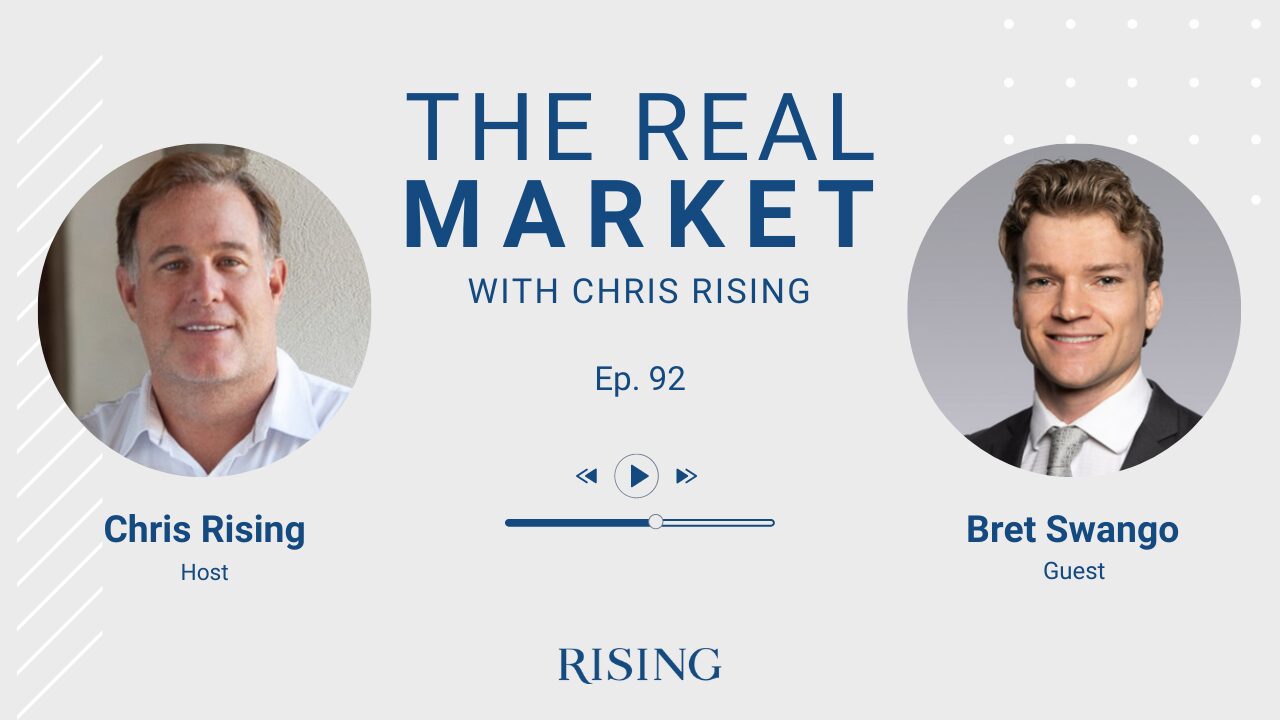
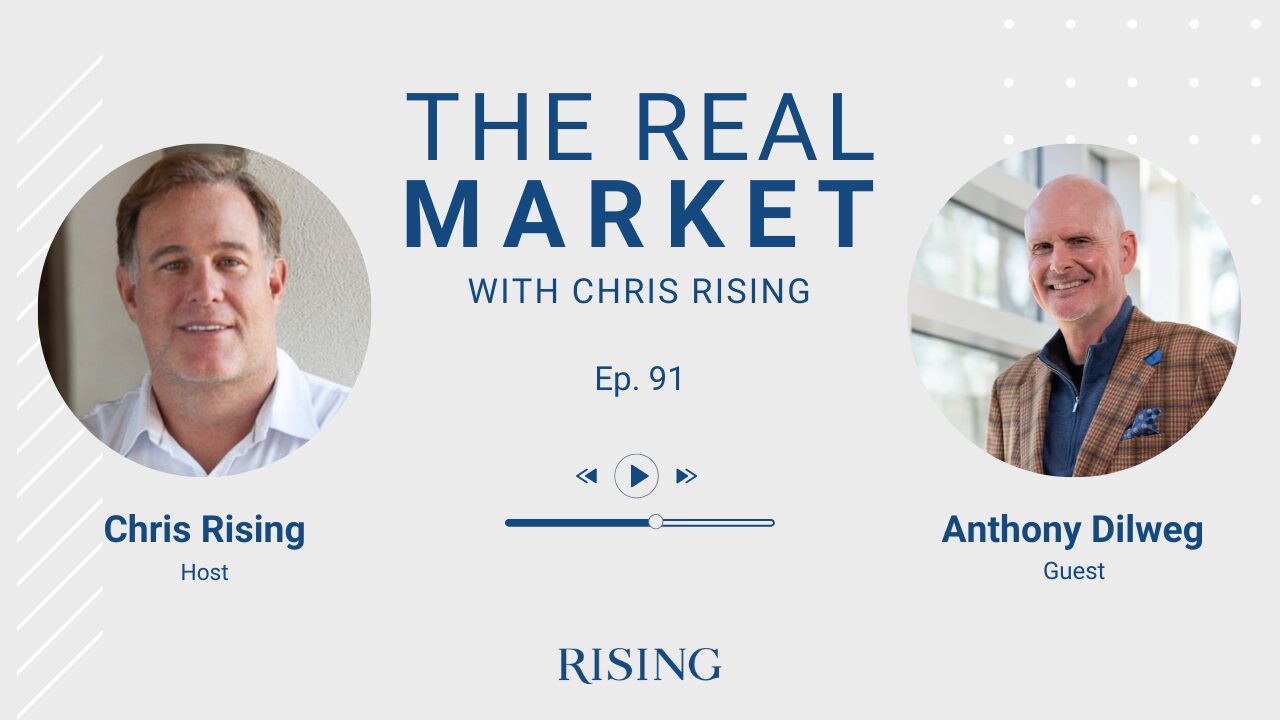
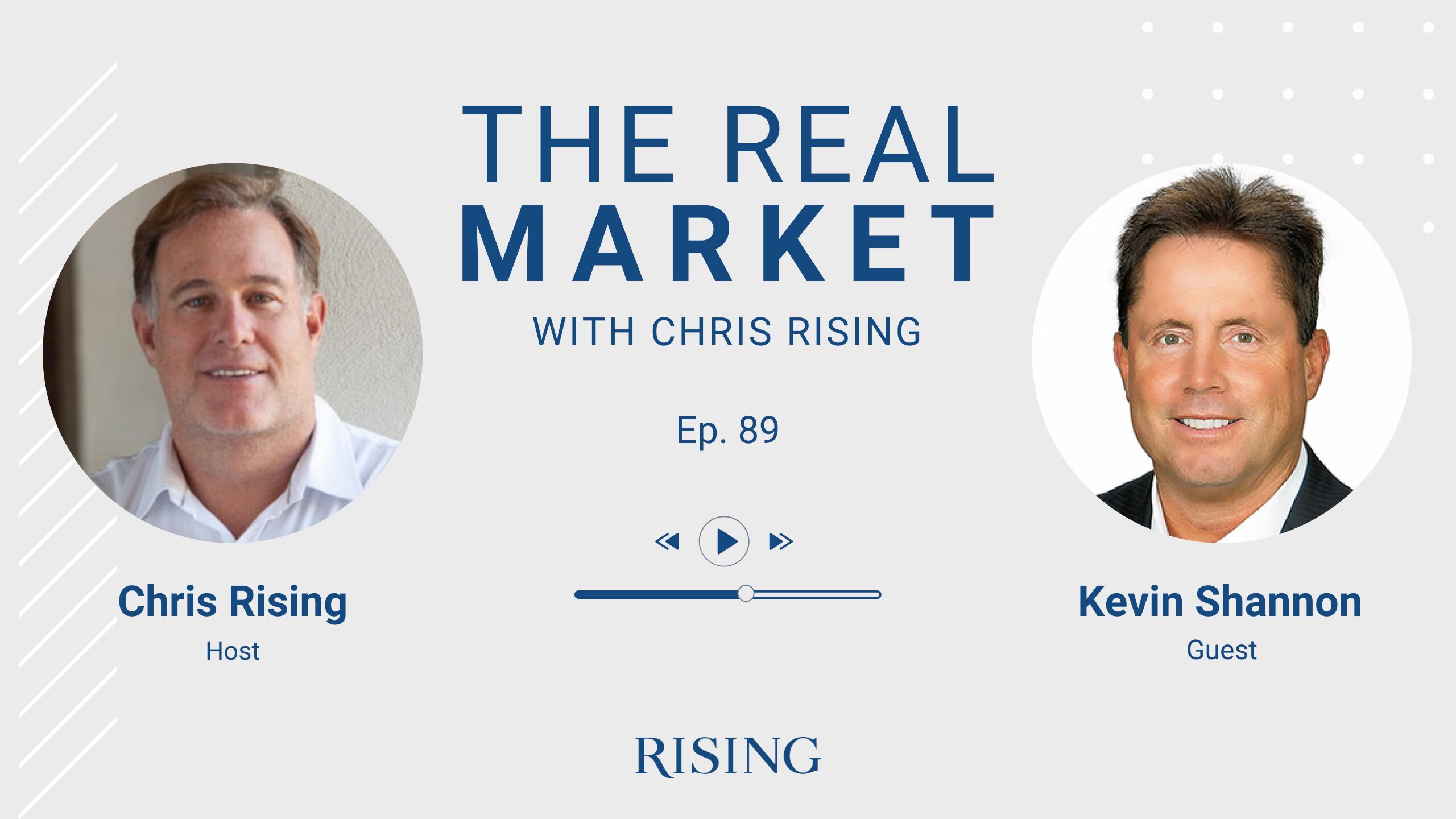
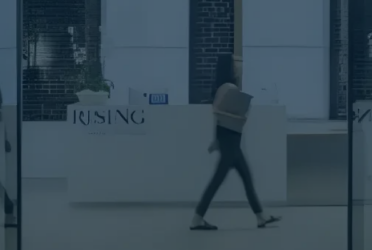
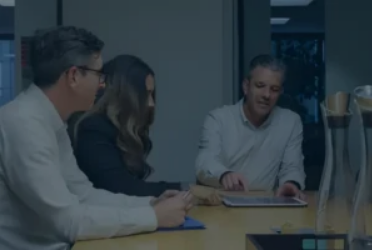
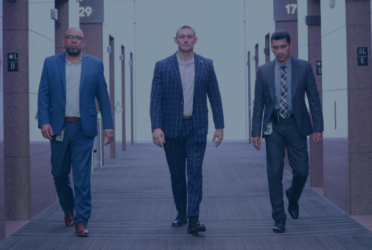
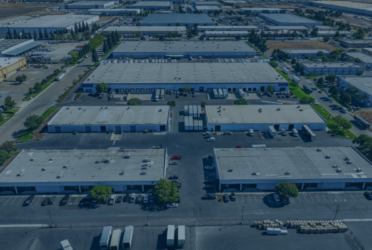
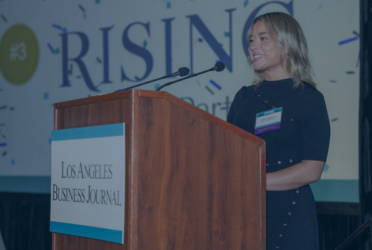
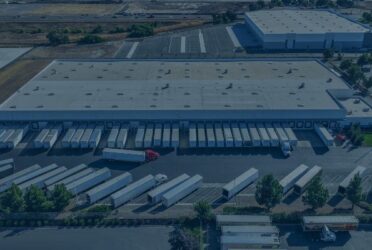
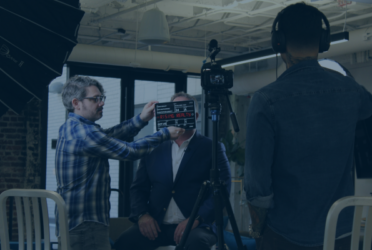
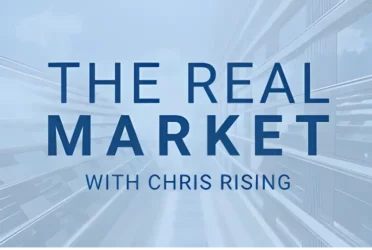 Podcast
Podcast